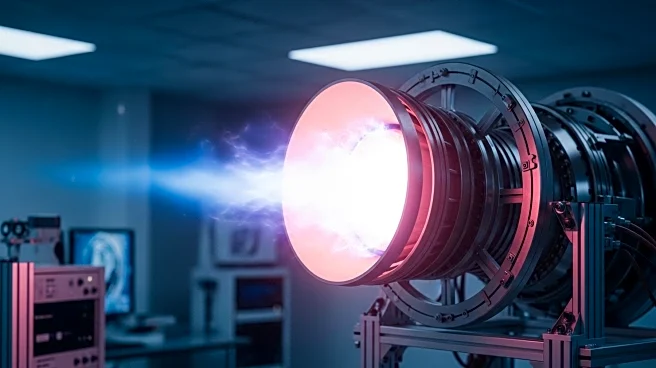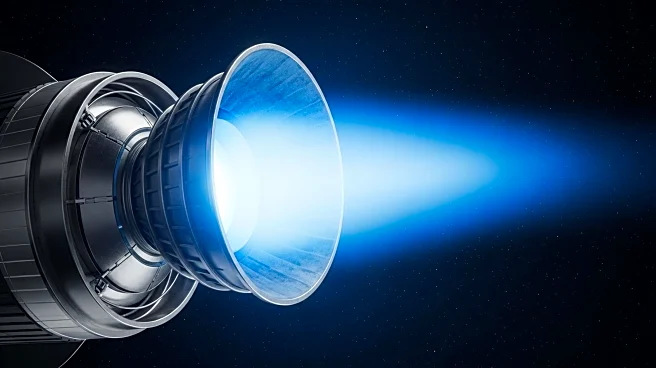What's Happening?
Chemists at the University at Albany have synthesized a new high-energy compound, manganese diboride (MnB2), which promises to revolutionize rocket fuel efficiency. This compound releases significantly more energy relative to its weight and volume compared to current fuels, such as aluminum used in solid rocket boosters. The development could lead to reduced fuel storage needs, allowing more space for mission-critical supplies and samples on space flights. The compound is safe, combusting only when exposed to an ignition agent like kerosene. The research, led by Assistant Professor of Chemistry Michael Yeung, is published in the Journal of the American Chemical Society.
Why It's Important?
The creation of manganese diboride as a high-energy compound has the potential to significantly impact the aerospace industry by improving fuel efficiency and reducing costs. This advancement could lead to more sustainable and cost-effective space missions, as less fuel would be required, freeing up space for additional equipment and samples. The compound's versatility also suggests potential applications in other fields, such as automotive catalytic converters and plastic recycling processes. The ability to synthesize such compounds opens new avenues for material science and chemistry, potentially leading to further innovations.
What's Next?
The successful synthesis of manganese diboride marks a step forward in materials chemistry, with researchers likely to explore its applications further. The Yeung lab may continue to investigate the compound's properties and potential uses in various industries. Future research could focus on optimizing the compound for practical applications in aerospace and other sectors, as well as exploring related boron-based compounds for additional breakthroughs.
Beyond the Headlines
The development of manganese diboride highlights the importance of exploring unusual chemical properties and structures. The compound's asymmetrical and unstable structure contributes to its high energy potential, showcasing the innovative approaches in modern chemistry. This research underscores the ongoing quest to understand and utilize boron-based compounds, which are believed to possess unique properties that could lead to groundbreaking applications.











